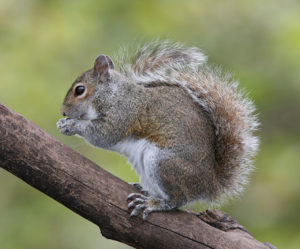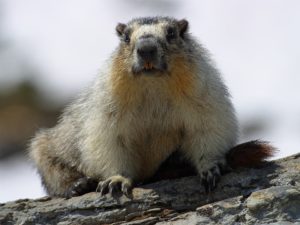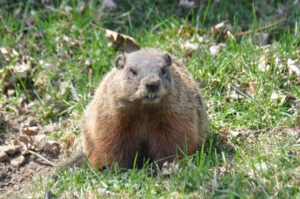What can be more disheartening than waking up one morning for the office and being unable to start the car? And when the hood is opened, finding some serious damages to the internal wirings?! Investing thousands of dollars while buying a car and again spending more dollars on the repairs is the worst scenario of these days. The repairs give no assurance that there won’t be the same damage again. This is definitely an issue of concern.
 Who is the culprit for these huge damages?
Who is the culprit for these huge damages?
Well, these are the tiny creatures which have a habit of chewing everything they come across. Yes, these are the rodents!
The rodents constantly have to gnaw on things to wear their teeth down. Their teeth continually grow, so just like we clip our fingernails, a rat gnaws on things in order to keep its teeth in check. Overgrown teeth are a possible problem for them. They like any surface that they can gnaw on, let the surface be metal, polymer, concrete, wood, etc.
Mice can easily fit through a 1/4 inch hole- About the size of a ring. Rats – a half inch. Nearly every car is susceptible to have small holes or gaps. And the rodents are able to make an entry when through such tiny holes.
The rodents are attracted towards the bright colors and texture of polymers. In the case of automotive wiring, the rodents are attracted because of their taste. Yes, you read it right. The automotive wirings are made of food-grade plastic for a long time now. These make the parts easier to recycle and to meet sustainability targets set by the different government policies. Though ‘green’, these wirings give off a faint smell when warm, which attracts the rodents and they chew up cars. The soy-based content on wiring and fuel lines attract the pests turning vehicles into a moveable feast for pests. as well as rice husks, wood, peanut oil, corn, and other sugars.
Every car owner knows that vermin nesting in a warm engine bay is yesterday’s news. It’s been a problem since the steam age. What is troubling is the growing volume of online stories about rodents chewing up the expensive wiring harness that keep Audis, Hondas, Toyotas, and Volvos running. The damage is not covered by the automaker’s warranty. Also, the assembly is so complex that the mechanics can’t solve the issue and you have to fix the issue by taking it at the car service center.
Recent news reported was:
Toyota rodent/cabling dispute dismissed | CarComplaints.com
June 16, 2018
A lawsuit by Toyota rodents was rejected after the plaintiffs failed in their claims that soy wires attract rats and other animals and cause them to chew and damage the wiring.
According to the plaintiffs, Toyota switched to “soybean-coated wires” cars, vans, SUVs, and trucks, but the wiring is allegedly defective because it attracts rats and other rodents. Once chewed, the damaged wiring can cause all types of vehicle functions to fail, which is allegedly a security risk.
The proposed class action claims that Toyota is responsible for damage to the wiring that was allegedly covered by the warranty. But the automaker blames the rats for the problem, something that’s not covered by the warranty.
According to the claim, the plaintiffs allege that Toyota’s damage was a “ environmental condition ” and therefore excluded from Toyota’s warranty repair “(19459010) Material Defects .”
The plaintiffs also allege, “ Toyota failed to notify consumers ” that “ it had made the transition ” to the wires coated with soybeans and that the coating “ is more attractive and enticing for rodents and therefore increases the likelihood ” the wiring is chewed.
Mice eating wiring in more and more cars
Woman hit with $1,500 repair bill
By John Matarese, WCPO │ September 5, 2018
If you park your car, truck or SUV outdoors at night, beware.
More and more car owners are getting hit with bills in the hundreds — even thousands — of dollars for rodent damage.
Connie Schwartz of Cold Spring, Kentucky, said she recently spotted something strange in her driveway. The fan belt was laying under her pickup truck.
“A friend came out to fix the belt for me,” she said, “and he said, ‘Oh my goodness, you have a bigger problem.'”
It was much more than a missing fan belt that she faced. Mice or chipmunks had eaten through her entire main wiring harness from the alternator.
“It was chewed all the way to the end, and bare wires were touching metal,” she said.
Years ago this was rarely an issue because automakers used rubber or vinyl wires under the hood.
But lately more and more of them have been turning to soy coatings, as in soy beans, according to several class action lawsuits filed in recent years.
Several ineffective measures are used to stop the menace caused by the pests. Use of ineffective pest repellent sprays and tapes is common. But the essentials used to make these products give ineffective results. Capsaicin is commonly used so as to prevent the damage to cables by pests. The pain receptors of the pests by now have got immune to the capsaicin.
The ultrasonic repeller is used these days. It is a device which emits a frequency that is unattractive to the rat’s ear. They serve to annoy the rat more than anything. These things can work great initially, but rats can get used to the noise.
You can buy the most dependable car on the earth and still face these problems. So what can you do to this?
The solution available with C Tech Corporation to this nuisance is a onetime solution and the need of the hour for the automobile industry. Our products are a blend of green chemistry and smart technology.
Our product Rodrepel™ is an extremely low toxic, low hazard rodent aversive. This product acts through a series of highly developed intricate mechanism ensuring that rodents are kept away from the target application. Our eco-friendly products do not kill the target species but only repel them. The product is compliant with ROHS, ROHS2, ISO, REACH, APVMA, NEA, EU BPR, and FIFRA exempted.
The product triggers a fear response in rodents thus protecting the application. It causes severe temporary distress to the mucous membrane of the rodents due to which the pest stays away from the application. The product triggers an unpleasant reaction in case if the pest tries to gnaw away the application. After encountering the above-mentioned emotions, the animal instinctively perceives it with something it should stay away from and stores this information for future reference. The fact that certain rodents are repelled is mimicked by other rodents as well. Thus, the other rodents too stay away from the applications. The unpleasant experience is imprinted within the animal’s memory and passed on to its progeny.
Keeping in mind about the safety and effective results, C Tech Corporation has developed globally patented, trademarked and approved eco-friendly and easy to use rodent spray called Rodrepel™ Rodent Repellent Spray, for use in cars.
The spray is designed considering the sensory mechanism of rodents. The product does not kill but repels the pest. The product does not cause any harmful effect on human health. RodrepelTM Rodent Repellent Spray has been formulated through original research by C Tech Corporation. The product is safe for the environment. It can be sprayed on the car wirings, underhood components of the car, battery box, fuel tanks, and polymeric hoses. It is compatible with all types of vehicle and totally safe for cars.
The product available in the form of solid masterbatch can be incorporated into the polymeric applications like wires and cables, pipes, oil filters, polymeric switch panels, components of ignition box, fuel tanks, fuel hoses, foam seats, airbags, tires and other polymeric components from cars while they are manufactured.
The product available in liquid concentrate can be diluted in paints and can be applied to interior and exterior of the cars. It can be applied over the bonnet, bumper, doors, trunks etc. The liquid concentrate is compatible with all kinds of paints and solvents.
The product in lacquer form is used as a direct application. The lacquer can be applied to already install wires and cables, polymeric hoses, fuel tanks, battery box, etc. The lacquer is transparent product and it does not wear off easily.
C Tech’s green products can help you get rid of the menace caused by these pests in cars.
By using our products, you can get an effective and long-lasting solution against pest nuisance.
You can order our RodrepelTM Rodent Repellent Spray from Flipkart.
You could thus contribute to us in using products which are eco-friendly thus causing no damage to the environment.
Contact us at technical.marketing@ctechcorporation.com if you’re facing problems with rodents and get best remedies to combat the pest menace.
Also visit our websites:
http://www.ctechcorporation.com/
http://www.rodrepel.com/
http://www.termirepel.com/
http://www.combirepel.com/
Follow our Facebook pages at:
1] https://www.facebook.com/Combirepel-411710912249274/
2] https://www.facebook.com/Termirepel-104225413091251/
3] https://www.facebook.com/Rodrepel-120734974768048/
Follow us on our Twitter pages at:
1] https://twitter.com/rodrepel
2] https://twitter.com/termirepel
3] https://twitter.com/combirepel

 Rodents have a ubiquitous presence and are a nuisance to us. Rodents like squirrels, rats are notorious. They have a pair of incisors which grow throughout their life. Hence to keep them in check they constantly chew on anything they find hard like our wires and cables. They not only damage our wires and cables but they also affect the equipment at the power station.
Rodents have a ubiquitous presence and are a nuisance to us. Rodents like squirrels, rats are notorious. They have a pair of incisors which grow throughout their life. Hence to keep them in check they constantly chew on anything they find hard like our wires and cables. They not only damage our wires and cables but they also affect the equipment at the power station. Marmots are large rodents that often become a nuisance to gardeners, farmers, and homeowners due to their appetites and burrowing habits. The yellow-bellied marmot is the most common species in the United States and a close relative of the woodchuck. Also known as rockchucks or whistle pigs, yellow-bellied marmots are social creatures that live in communities of 10 to 20 individuals. During the spring and summer, the animals undergo a period of hyperphagia, a feeding frenzy designed to fatten the marmots so they can survive the coming winter. By huddling together in underground burrows lined with hay or grass, marmots hibernate for up to 200 days at a time, easily spending half of their 13 to 15 years of life asleep.
Marmots are large rodents that often become a nuisance to gardeners, farmers, and homeowners due to their appetites and burrowing habits. The yellow-bellied marmot is the most common species in the United States and a close relative of the woodchuck. Also known as rockchucks or whistle pigs, yellow-bellied marmots are social creatures that live in communities of 10 to 20 individuals. During the spring and summer, the animals undergo a period of hyperphagia, a feeding frenzy designed to fatten the marmots so they can survive the coming winter. By huddling together in underground burrows lined with hay or grass, marmots hibernate for up to 200 days at a time, easily spending half of their 13 to 15 years of life asleep. Rodents are a great threat to farmers as they destroy one percent of the world’s cereal crops on an annual basis. Rodents are the consumers of vitamin and protein-rich foods and often fed on crops embryo, stripping away germination capabilities and nutrients in the process. Rodents are notorious for contaminating food supplies, and one of the primary targets is grains.
Rodents are a great threat to farmers as they destroy one percent of the world’s cereal crops on an annual basis. Rodents are the consumers of vitamin and protein-rich foods and often fed on crops embryo, stripping away germination capabilities and nutrients in the process. Rodents are notorious for contaminating food supplies, and one of the primary targets is grains. Like the above-mentioned cases, there are many cases of rodent attacks on farms causing severe damage to crops and its productivity. Entomologist said 4.6 to 54% paddy crops were lost due to rat infestation. Rodent attack damage as much as 55% of horticultural crops. The extent of stored grain losses depends upon the distribution, abundance, and species composition of the rodent population involved.
Like the above-mentioned cases, there are many cases of rodent attacks on farms causing severe damage to crops and its productivity. Entomologist said 4.6 to 54% paddy crops were lost due to rat infestation. Rodent attack damage as much as 55% of horticultural crops. The extent of stored grain losses depends upon the distribution, abundance, and species composition of the rodent population involved. Swamp rats also known as orange-toothed species, coypu and nutria are the water-loving rodents that inhabit banks of rivers, lakes, lagoons, marshes, and swamps.
Swamp rats also known as orange-toothed species, coypu and nutria are the water-loving rodents that inhabit banks of rivers, lakes, lagoons, marshes, and swamps. Swamp rats breed quickly and the breeding is continuous throughout the year. Besides breeding quickly the Swamp rats consume a large amount of vegetation. They feed yearly on plants including grasses, sedges, reeds, water parsnip, and even water lilies.
Swamp rats breed quickly and the breeding is continuous throughout the year. Besides breeding quickly the Swamp rats consume a large amount of vegetation. They feed yearly on plants including grasses, sedges, reeds, water parsnip, and even water lilies. They feed on green vegetables. They dine on beautiful flowers. They burrow holes in the ground.
They feed on green vegetables. They dine on beautiful flowers. They burrow holes in the ground.